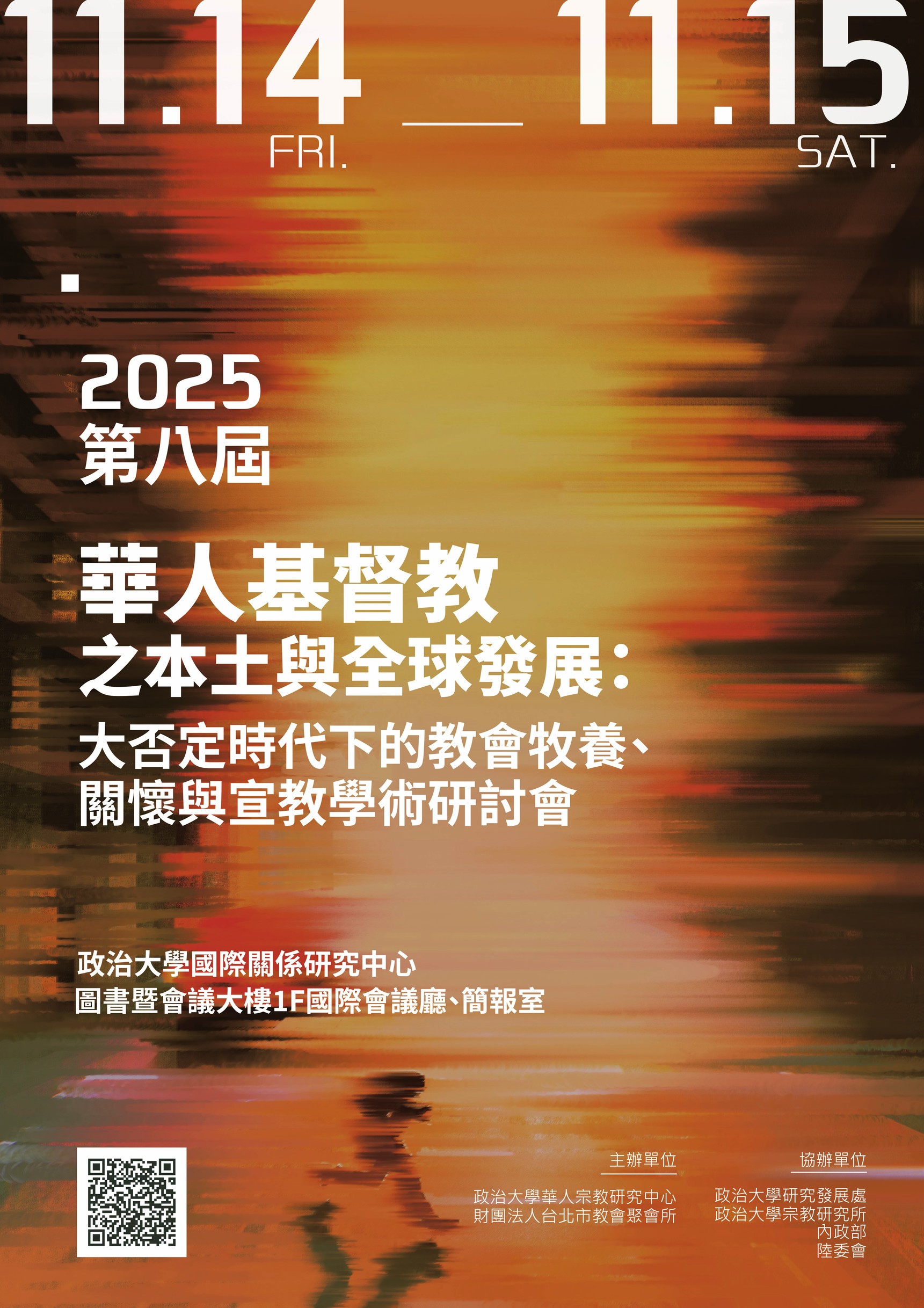2025-04-10
[研討會]2025「神」與「道」國際研討會|Who is God? What is the Dao?
【2025「神」與「道」國際研討會|Who is God? What is the Dao?】
免費報名中!全程參與將由主辦單位保留座席資格,機會難得,誠摯邀請您共襄盛舉!
在十七、十八世紀的中西交流史上,來華耶穌會士曾提出一個深具挑戰性的問題:「神是誰?道又為何?」
為回應這個自近代以來持續延燒的神學與哲學辯題,本次國際研討會以“Who is God? What is the Dao?”為主題,集結當代來自猶太教、基督宗教與道教領域的重量級學者,進行跨宗教、跨文化的深度對話與學術交流。
研討會時間|Conference Dates
2025年5月7日(三)至5月9日(五)
每日 09:00 – 17:00
地點|Venue
國家圖書館 3樓 國際會議廳
(臺北市中正區中山南路20號)
講者陣容(部分)|Selected Speakers
Michel Fedou, SJ(Facultés Loyola Paris)
Julien Darmon(Éditions Albin Michel)
John Lagerwey勞格文(法國高等研究學院榮休教授)
李豐楙(中央研究院院士)
Daniel Canaris 柯修文博士
Benoît Vermander SJ 魏明德(上海復旦大學教授)
Claudia von Collani 柯蘭霓(德國維爾茨堡大學教授)
Thierry Meynard, SJ 梅謙立(廣州中山大學教授)
Yves Vendé, SJ 溫德 (法國裡爾天主教大學)
報名連結|Register Now
https://forms.gle/KiSDb14zBpMZ2m3y6
(議程請見報名表單)
本研討會誠摯歡迎宗教、哲學、歷史、跨文化研究學者與關心信仰議題的朋友們參與。我們將共同從不同宗教視角出發,反思「神是誰?道是什麼?」的深層意義。
無論你來自宗教界、學術界,或單純對這議題充滿興趣,這三天將會是一次極富啟發的思想之旅。

.png)


2.png)
![[專題演講] 劉苑如——機與時:道宣《集神州三寶感通錄》的歷史感通觀](upload/43/doc/34213/20250527機與時海報.png)
![[專題演講]勞格文教授專題演講——水口:中國宗教與地方社會](upload/43/doc/33447/水口中國宗教與地方社會 (1).png)
![[研討會]2025「神」與「道」國際研討會|Who is God? What is the Dao?](upload/43/doc/33438/海報_outline_72dpi.jpg)
![[專題演講] 從苦行到流行:在地觀察與民俗社會學多重視角下的大甲媽祖進香](upload/43/doc/32916/從苦行到流行: 在地觀察與民俗社會學 多重視角下的大甲媽祖進香 (1).png)